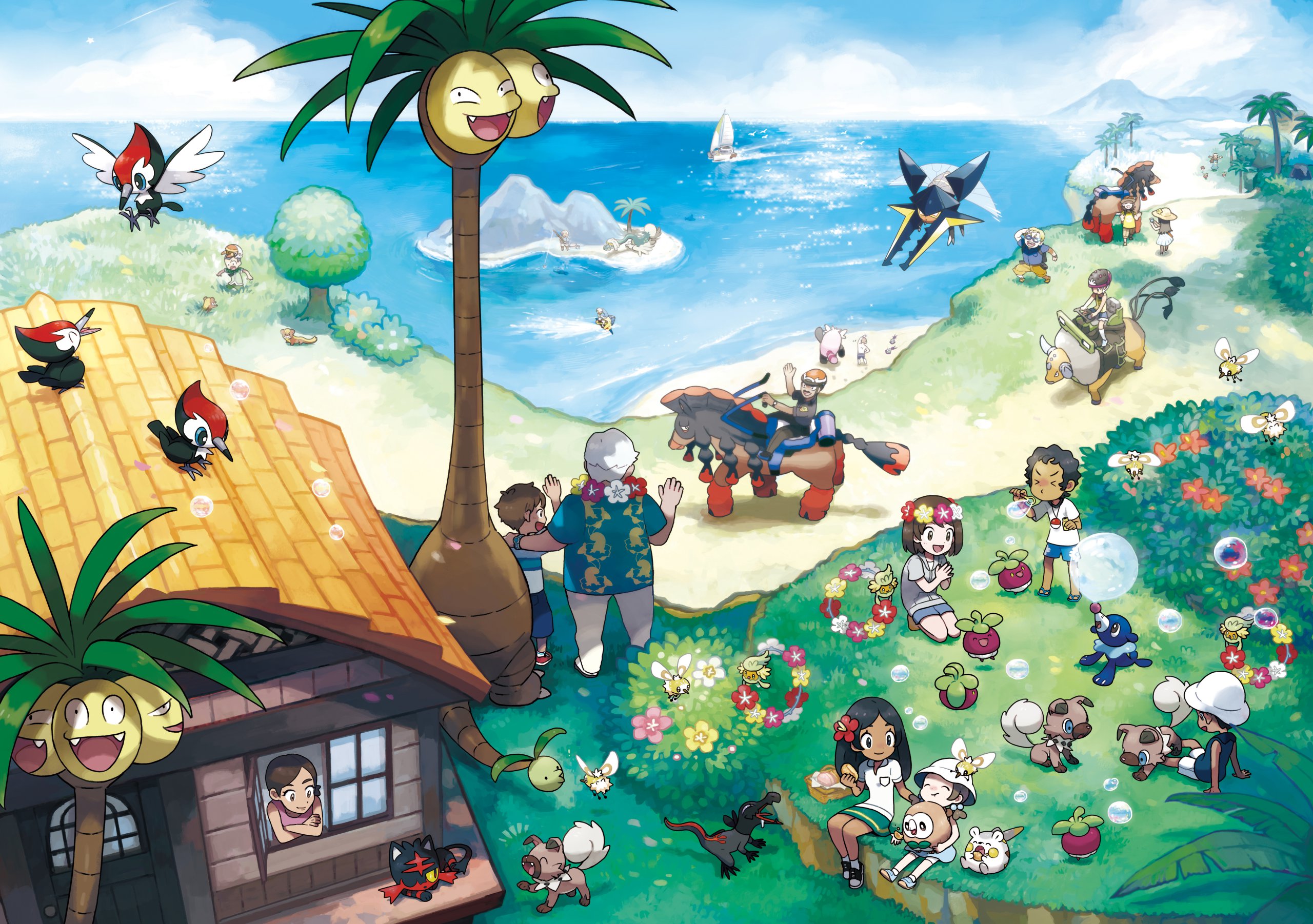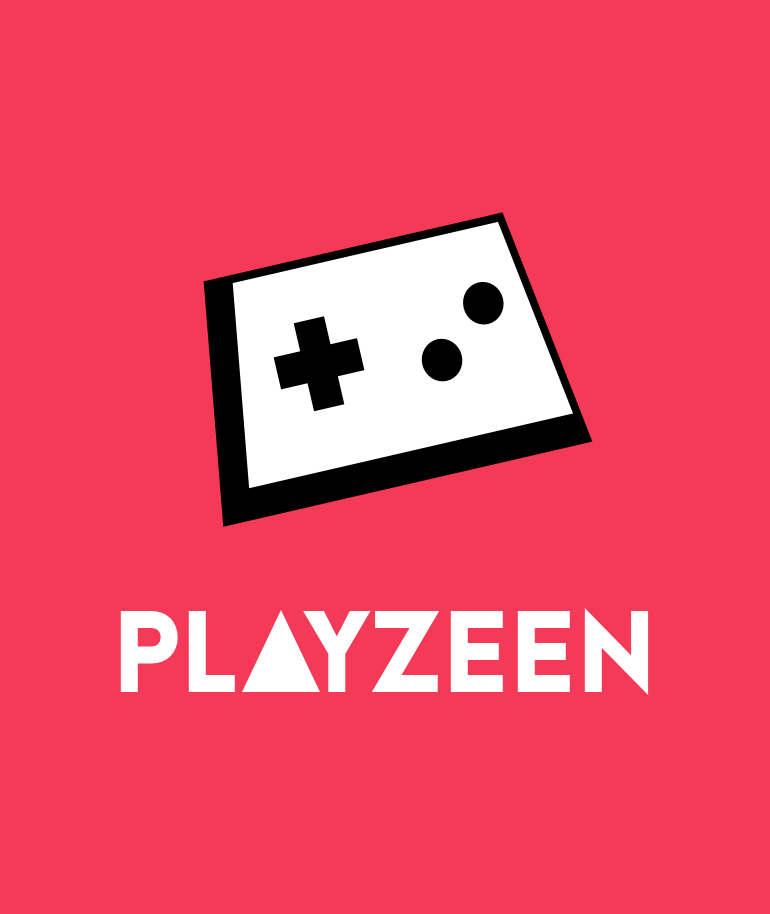Most Pokémon fans will agree that the series peaked on the DS and has never managed to reach the same heights as the fourth and fifth generations, with Black and White, along with their sequels, considered the pinnacle of the series. The 3DS and Switch Pokémon games have almost universally gotten more mixed reception at best. I’ll be taking a look back at the Switch’s Pokémon offerings in a future article, but for now I want to revisit one of the more polarizing Pokémon generations. It’s time to head back to the tropical paradise of Alola.
Before we get started, just a fair warning, there will be spoilers – so if you haven’t played the games and want to go in blind, come back to this article later!
Sun and Moon receive a lot of criticism to this day for their excessive tutorials, pacing issues, handholding, and linearity. And to an extent I agree – the first island is an especially painful slog on subsequent replays, and there are quite a few times I wish the NPCs would just shut up and let me play the game. But Sun and Moon, and their Ultra versions, did so many more things well and took some bold steps for the franchise, so that playing them truly felt like a breath of fresh air and a step forward for the Pokémon series.

The region of Alola itself is modeled after the Hawaiian Islands, and, as you would expect, it’s bright, vibrant, and full of life. Volcanoes tower above lush beaches where crystal blue water laps against the shoreline. Bustling cities like Heahea and Hau’oli serve as commercial and tourism hubs for the region, but you don’t have to travel far outside the cities to find sleepy rural towns like Iki and Paniola. There are so many tiny details peppered throughout Alola that truly make the region feel alive and vibrant.
The citizens of Alola live a laid-back lifestyle, and, more so than any other region, live in an almost symbiotic relationship with Pokémon. This relationship is most clearly reflected in-game with the presence of ride Pokémon, which are specially trained Pokémon who are ready to be called on for assistance with surfing across water, searching for items, moving boulders, flying from town to town, and other helpful services. Yes, at its core it’s a replacement for HMs (finally!), but it also shows just how integral Pokémon are to the everyday lives of Alolans beyond just training and battling.
Traditions are deeply revered in Alola, and none more so than the island challenge. Challengers must travel through the islands completing various trials, each one culminating in a battle against a Totem Pokémon. These powered-up Pokémon are capable of summoning partners to assist them in battle – such as a Blissey for healing or a Skarmory to set up Tailwind – and actually require a bit of strategy to fight. Completing each island’s trials culminates in a battle with that island’s Kahuna, and finishing all the trials sends the player to the top of Mount Lanakila for the last gauntlet of battles standing between them and the island challenge championship.
As I just mentioned, the Totem Pokémon put up quite a fight, and many of the other boss fights in Alola can be challenging as well. Ultra Sun and Ultra Moon might in fact be the most difficult games in the mainline series – especially when you throw in the brutal stat-check fight that is Ultra Necrozma. For those of us who lament the utter absence of difficulty in most of the Pokémon series, Gen 7 offered a welcome challenge.

And the new creatures that populate the region are fantastic – if a bit slow stat-wise. Gen 7 brought us some of my favorites like Mimikyu, Rockruff, Decidueye, Araquanid, and so many more. Not only that, but it introduced the concept of regional forms – existing Pokémon who have changed in adaptation to a specific region. Alolan Marowak, in response to Alola having an abundance of Grass-type Pokémon, became a Fire/Ghost type. Sandshrew in Alola migrated to the snowy mountains in order to escape the volcanic activity in their normal desert habitat, and thus eventually formed a hard shell of ice and steel. And of course we can’t forget the comically tall Alolan Exeggutor, brought on by the abundant bright sunlight. Overall, there are 18 regional variants of existing Pokémon that populate Alola. The introduction of regional forms allows for a lot of interesting new ideas without having to add more fully-new Pokémon to an already enormous roster, and future generations have taken advantage of this to create interesting regional forms of their own.
Throughout your journey through Alola, you’ll meet a host of charming characters, from the loveable curmudgeon police officer Nanu to the quirky Acerola. The region’s professor, Kukui, especially stands out among Pokémon professors – and not only because he’s a young, perpetually shirtless thirst trap (a trait that’s lampshaded on more than one occasion during the game). Kukui is actively involved in the story, encouraging the young island challenge-goers on their journeys, developing the region’s first Pokémon League, and even participating in battles. In Sun and Moon, he’s even the final “champion” battle in the game, and, while not super difficult, he’s no pushover either.

There’s also Hau, the grandson of the first island’s Kahuna, Hala, and the player character’s rival. I hear a lot of slandering this kid and I’m not going to stand for it. Sure, at first he comes across as another generic, overly cheerful, friendly rival. But at points during his journey we start to see that crack, making us wonder if it’s a bit of a facade. He expresses his frustration that he’s not strong enough to help Lillie, that he’ll forever live in his grandpa’s shadow, and that he’s constantly being outpaced by the player character.
In a lot of ways, you are his Blue/Gary Oak – one step ahead of him throughout the entire journey. In Ultra Sun and Ultra Moon this comes full circle, where, instead of you having a champion match against Kukui, Hau defeats the Elite Four only to find out that you’ve already become the champion. He challenges you to a match to defend your title – it’s a repeat of Red vs. Blue, but this time Blue wins and sends Red home packing. You can’t help but feel sorry for the poor kid.
Gen 7 also features some of the best villains in the series. Lusamine is so consumed by her obsession with the Ultra Beasts, to the point where it causes her to gaslight, manipulate, and outright emotionally abuse everyone she interacts with – including her own children, Lillie and Gladion. Gladion rebels and escapes her clutches but develops a cold, standoff-ish personality and a reluctance to trust others as a result. He becomes obsessed with becoming stronger, in order to stand up to adults who would harm those whom he cares about – especially Lillie and his partner, Type: Null.

Lillie remains in her suffocating grip though, until she finally breaks free in an attempt to save Nebby, the Cosmog that Lusamine’s Aether Foundation had been using to experiment with the Ultra Wormholes. She winds up living with Professor Kukui and his wife, Professor Burnet, and serving as Kukui’s assistant. Throughout the journey, we get to see Lillie’s own journey of self-discovery, as she grows from a timid girl with no self-confidence to discovering her own strength and independence, eventually standing up to her mother in a climactic confrontation. Lillie’s character arc is one of the best we’ve ever seen from the Pokémon series, and her and Gladion’s relationship with their mother is very well-written and executed.
Lusamine also emotionally manipulates the hell out of Guzma, the leader of Team Skull. She presents herself as a caring maternal figure, being the “only adult that ever acknowledged his strength,” all the while using him and Team Skull to bring her closer to her goal of opening the Ultra Wormholes. Considering Team Skull is made up of a bunch of misunderstood outcast teens who feel rejected from society and are just looking for their own place in the world, it’s unbelievably cruel. It’s made even worse when we find out that Guzma ran away from home and formed Team Skull to give those kids like himself a place to belong, and it’s heavily implied (though not explicitly confirmed) that his relationship with his father was an abusive one. The games’ plot actually touches on some mature themes, with the overtones of parental abuse and neglect throughout and how they manifest themselves in the ones being abused. It’s surprisingly dark and mature for a Pokémon game to even touch on such themes, and it’s a welcome change considering we usually get a very sanitized, generic plot.

Lusamine goes to such an extreme that in the final confrontation with her in Sun and Moon, she actually merges herself with Nihilego, forming an Eldritch horror of a human-Pokémon hybrid. While the player unfortunately doesn’t get to fight her in this form (instead having a Pokémon battle with her entire team getting a big Totem buff), it was still a jaw-dropping moment in the story and a place I never expected the series to go. Ultra Sun and Ultra Moon, which offer a bit of an “alternate universe” story to the originals, excised this story beat entirely though, choosing instead to focus on the Ultra Recon Squad and Necrozma, and it’s unfortunately not for the better. In fact, the entire Lusamine arc is watered down in the Ultra games, and it’s worth it to play the originals at least once just to experience the much more satisfying plot.
All in all, I think an argument could be made for Gen 7 being my favorite of the post-DS Pokémon generations. They offer a journey through a vibrant region with some very welcome shakeups to the traditional formula, like getting rid of HMs and having Totem battles instead of gyms, and the new Pokémon and regional forms are absolutely delightful. Sun and Moon have a surprisingly fleshed-out, mature plot and characters for a Pokémon game, and while the Ultra versions offer an alternate re-telling with some unfortunate sacrifices on the plot side, they offer an improved gameplay experience and some of the toughest battles in the entire series. It’s worth it to play both the originals and the Ultra version since they have their own strengths. If you can power through the glacially slow start, you’ll find some of the strongest and most underrated entries in the Pokémon series.




